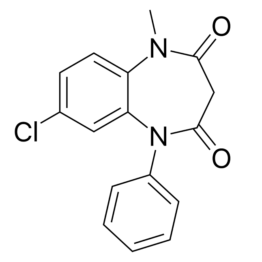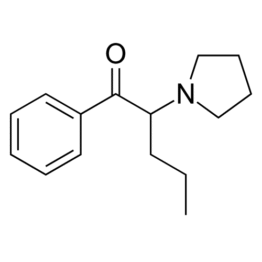Transition metal (TM)-catalyzed carbon–carbon (C–C) bond activation has emerged as a useful tool for devising unusual bond-disconnecting strategies. (7) To seek a complementary ring-forming approach, a deconstructive strategy based on C–C bond activation of readily available cyclic ketones has been conceived (Scheme 1A). This named “cut-and-sew” strategy (8) uses cyclic ketones with a tethered unsaturated moiety as substrates. It […]
Isolated from marine fungus Penicillium bilaiae MA-267, penicibilaenes A (8) and B (9) are two sesquiterpenes showing selective and potent activity against plant pathogenic fungus Colletotrichum gloeosporioides. (37) They possess an intriguing tricyclo[6.3.1.01,5]dodecane skeleton, which is constituted by [3.3.1]-bridged and [4.3.0]-fused junctions. They also contain six chiral centers with five being contiguous and one all-carbon quaternary stereocenter. Inspired by the […]
Isolated from extracts of Podocarpus latifolius, cycloinumakiol (1) exhibits a distinct proposed chemical structure from other natural products in the tricyclic inumakiol family. (29) In particular, it shows an unusual tetracyclic skeleton featuring a dihydrofuran ring and a quaternary carbon center. From a retrosynthetic aspect (Scheme 18A), (10a) we envisioned that the isopropyl group on the phenyl ring could be […]
Considering that the carbonyl moiety in the substrates can be removed by decarbonylation, (4 + 2 – 1)-type transformations, namely, “decarbonylative cut-and-sew” reactions, have also been developed. This provides an unusual strategy to access bridged- or fused-ring scaffolds without bearing a ketone moiety. In 2014, the (4 + 2 – 1) reaction between benzocyclobutenones and alkynyl […]
The use of saturated cyclobutanones provides opportunities to access various aliphatic ring systems. For example, β-branched cyclobutanones can undergo (4 + 2) cut-and-sew reactions to generate bridge bicycles. The seminal work by Murakami et al. demonstrated the synthesis of benzo-fused [3.2.1] bridged rings (Scheme 8), (9f) though the scope is limited to the benzene linker due to […]
Benzocyclobutenones are a common class of four-membered ring ketones. (11,12) They can be easily accessed by diverse methods, including [2 + 2] cycloaddition with benzynes, (12b,c,e,g) intramolecular nucleophilic addition, (12a) transition metal-catalyzed intramolecular C–H functionalization, (12d,f) and photoinduced cyclization. (12h) Driven by strain release (their ring strain is higher than saturated cyclobutanones), (13) benzocyclobutenones are excellent substrates for transition-metal-mediated C–C bond activation. Inspired by Liebeskind et al.’s […]
The development of sustainable plastic materials is an essential target of chemistry in the 21st century. Key objectives toward this goal include utilizing sustainable monomers and the development of polymers that can be chemically recycled/degraded. Polycarbonates synthesized from the ring-opening copolymerization (ROCOP) of epoxides and CO2, and polyesters synthesized from the ROCOP of epoxides and […]
The introduction of liquid microjet technology, enabling vacuum-based probes of the liquid phase, has allowed researchers to develop an exciting range of new experiments in the last ten years. Such experiments are designed to gain greater insight into molecular behavior inside liquids and at liquid interfaces, in turn providing a new tool for physical chemistry. […]


Recent Comments